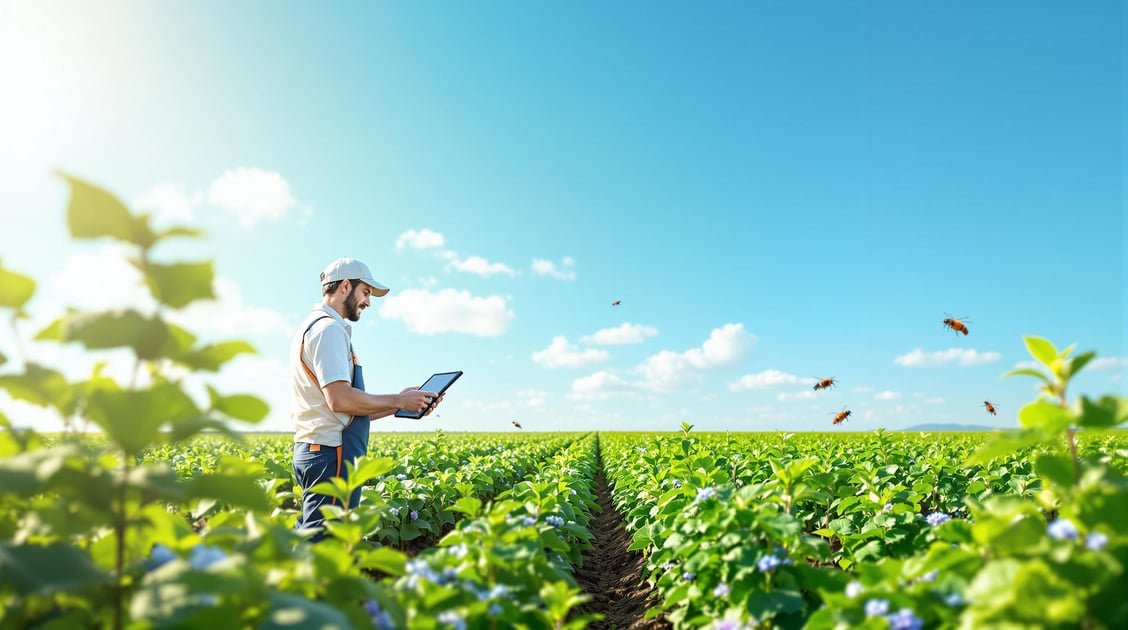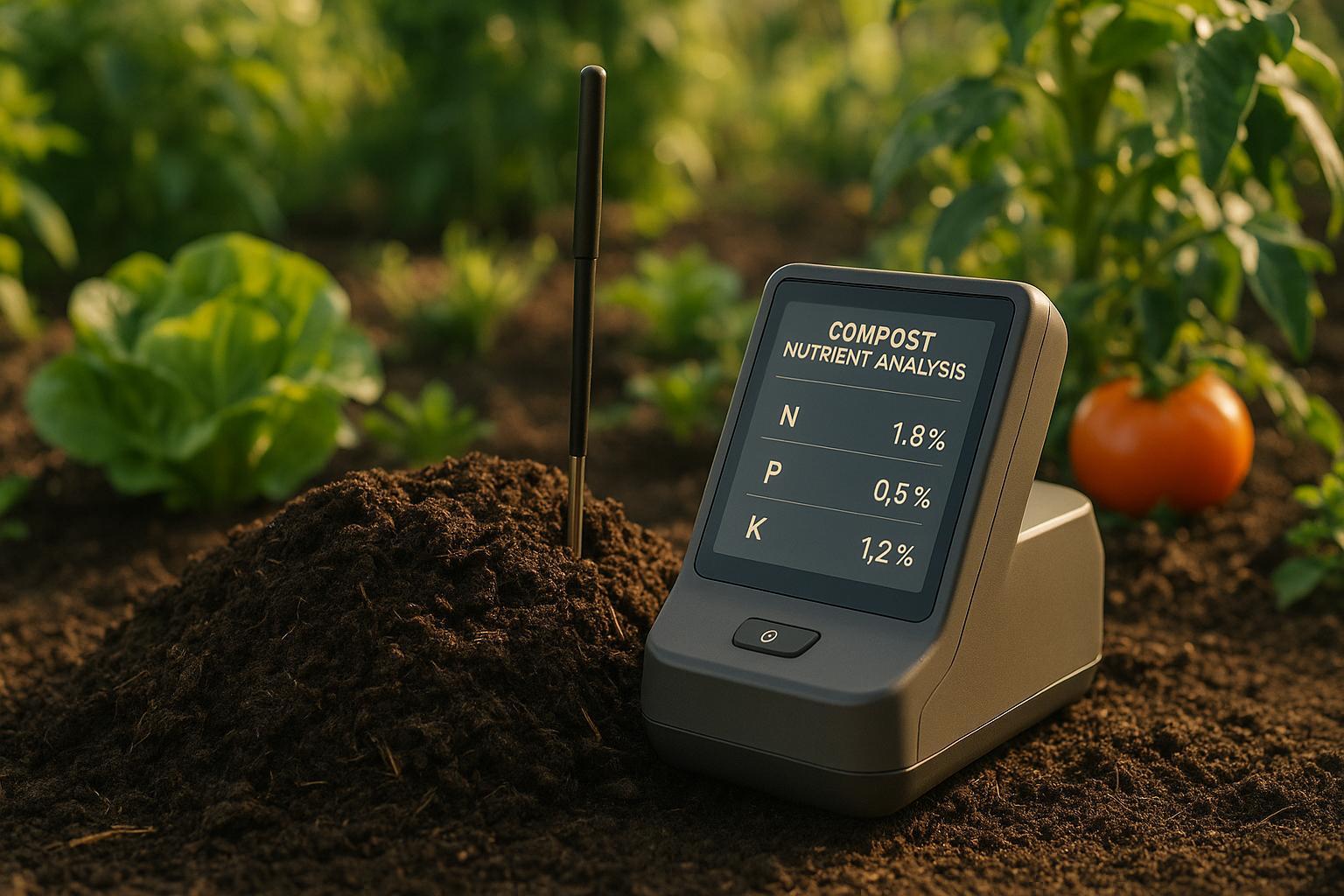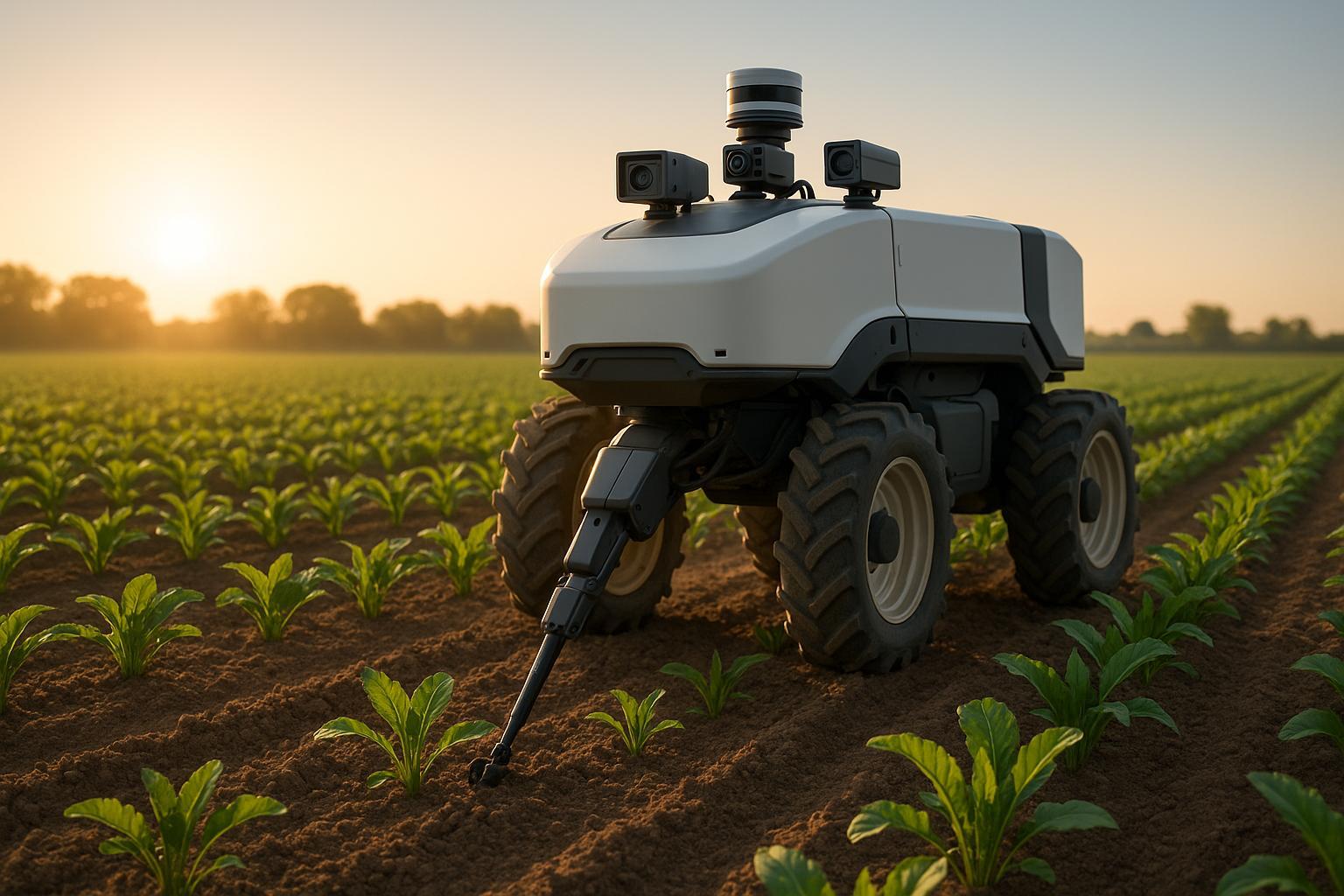How AI Deploys Microbial Pest Control

AI and microbial pest control are transforming agriculture by combining technology with natural pest management. Here's what you need to know:
- What is Microbial Pest Control? It uses microorganisms like bacteria and fungi to target pests without harming crops, humans, or helpful insects. Example: Bacillus thuringiensis (Bt), a bacteria that produces pest-specific toxins.
- How Does AI Help? AI analyzes weather, soil, and pest data to optimize when and where microbial treatments are applied.
- Key Tools:
- Smart Sensors: Track temperature, humidity, and soil moisture.
- AI Software: Predicts pest behavior, assesses risks, and recommends treatments.
- Automated Systems: Drones, robots, and smart sprayers apply treatments precisely and efficiently.
- Challenges: High costs, system complexity, and training requirements remain hurdles.
Particle Accelerator Episode 30 | Pam Marrone

AI Pest Detection Systems
AI pest detection systems use advanced sensors and software to monitor pest activity and apply microbial controls with precision. These systems rely on data collected by sensors, which is then processed by algorithms to detect and evaluate pest behavior.
Smart Sensors and Data Collection
Sensor networks play a key role by gathering both environmental and visual data. Common components include:
- Environmental sensors: Track temperature, humidity, and soil moisture levels.
- Cameras: Capture detailed, high-resolution images of crops.
This data is sent to cloud-based servers, where AI algorithms analyze it in real time to identify signs of pest activity.
Pest Detection Software
The software processes the sensor data using specialized algorithms to recognize and predict pest behavior. Its main features are:
- Pattern recognition: Detects pest movements and feeding habits.
- Population modeling: Estimates pest numbers over time.
- Risk assessment: Gauges potential crop damage based on pest activity.
AI Decision-Making Process
The AI system for microbial pest control uses data analysis and predictive models to create targeted pest control strategies. By examining both historical and real-time data, it predicts infestations and initiates timely actions. This efficient flow from detection to decision ensures quick and accurate responses.
Predicting Pest Populations
The system analyzes past and current data to identify pest population trends. By comparing previous patterns with present conditions, it estimates the likelihood and severity of infestations.
Choosing the Right Treatment
Based on these predictions, the AI identifies the most effective microbial treatments to address the specific threats.
sbb-itb-4d6a8dd
🚀 Ready to Reinvent Your Garden?
Join thousands of homeowners who have transformed their gardens using our AI design tool. Upload one photo to explore endless possibilities.
Get your AI garden designs →Automated Treatment Systems
AI-driven systems are changing the way microbial pest control is applied, offering precise and timely treatments. These systems work hand-in-hand with AI decision-making, ensuring treatments are applied at the right time and in the right way.
Drone and Robot Applications
Drones and robots are being developed to handle microbial treatments in gardens and farms. Though still in experimental stages, these technologies aim to deliver treatments with pinpoint accuracy, covering only the areas that need it while minimizing waste.
Smart Sprayer Systems
Smart sprayers, paired with AI, are being designed to refine how treatments are applied. Engineers are working on features like droplet size, spray patterns, and timing to make applications more efficient. Early tests suggest these systems could significantly improve how treatments are delivered.
Results Monitoring
After treatments are applied, AI systems track results and gather data on effectiveness and environmental impact. This continuous feedback loop helps fine-tune future applications, making pest control smarter and more efficient over time. The system learns and improves with every cycle, ensuring better outcomes for future treatments.
Results and Limitations
AI-powered microbial pest control systems deliver greater accuracy and efficiency than traditional manual approaches. These advancements could reshape how pest management is handled.
However, there are challenges to consider. High upfront costs, environmental factors, and the complexity of operations - like the need for expert training and seamless system integration - can pose hurdles. While these systems excel in automated pest detection and treatment, their practical use depends on balancing these obstacles with their benefits.
Field trials and ongoing research are expected to improve these systems, making them more accessible and affordable over time. These developments will provide a clearer picture of AI's role in pest control.
Conclusion
AI-powered microbial pest control is changing the game for agriculture by combining precision tools, smart systems, and modern pest management practices. With features like smart sensors, automated detection, and AI-driven decision-making, pest control has become more targeted and efficient.
These advancements allow for real-time monitoring and precise application of treatments, cutting down on pesticide use while keeping pest control effective. Tools like AIGardenPlanner enable gardeners to take a proactive approach, promoting ecosystems that encourage helpful insects and naturally pest-resistant plants. This shift not only improves current methods but also lays the groundwork for future innovations.
While the systems can be complex and costly, the benefits - such as reduced chemical use, better crop protection, and more sustainable pest control - are hard to ignore. As technology continues to advance, microbial pest control is expected to become even more effective and accessible.
Related posts
Related Articles

How AI Recommends Drought-Tolerant Native Plants
Explore how AI tools can help you select drought-tolerant native plants tailored to your garden's unique conditions and promote sustainable gardening.

AI in Plant Breeding: Disease Resistance Insights
Explore how AI revolutionizes plant breeding, enhancing disease resistance and accelerating the development of resilient crops.

IoT Sensors for Pest Monitoring: Real-Time Data Explained
Explore how IoT sensors are revolutionizing pest monitoring in agriculture, providing real-time data for smarter, eco-friendly pest control.

AI Tools for Compost Nutrient Analysis
Explore AI tools that enhance compost nutrient analysis, offering faster, accurate insights for gardeners and farmers at all levels.

Can You Use In-Ground Soil for Potted Plants? Factors to Consider
Explore the pros and cons of using in-ground soil for pots and learn how to prepare it for potting. Discover the key factors to consider when deciding if in-ground soil is suitable for your potted plants.

Precision Weed Control with IoT and AI
Explore how IoT and AI technologies are revolutionizing weed control, reducing herbicide use and costs while improving farming efficiency.